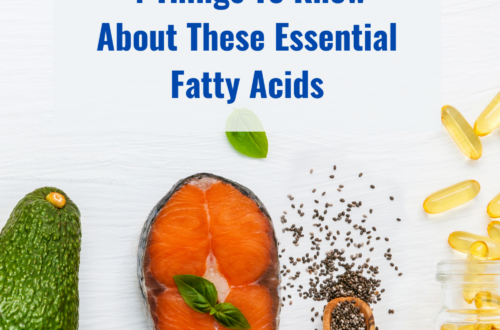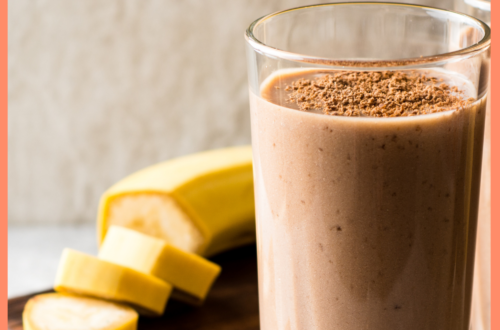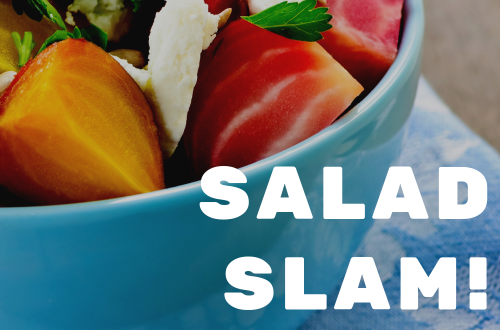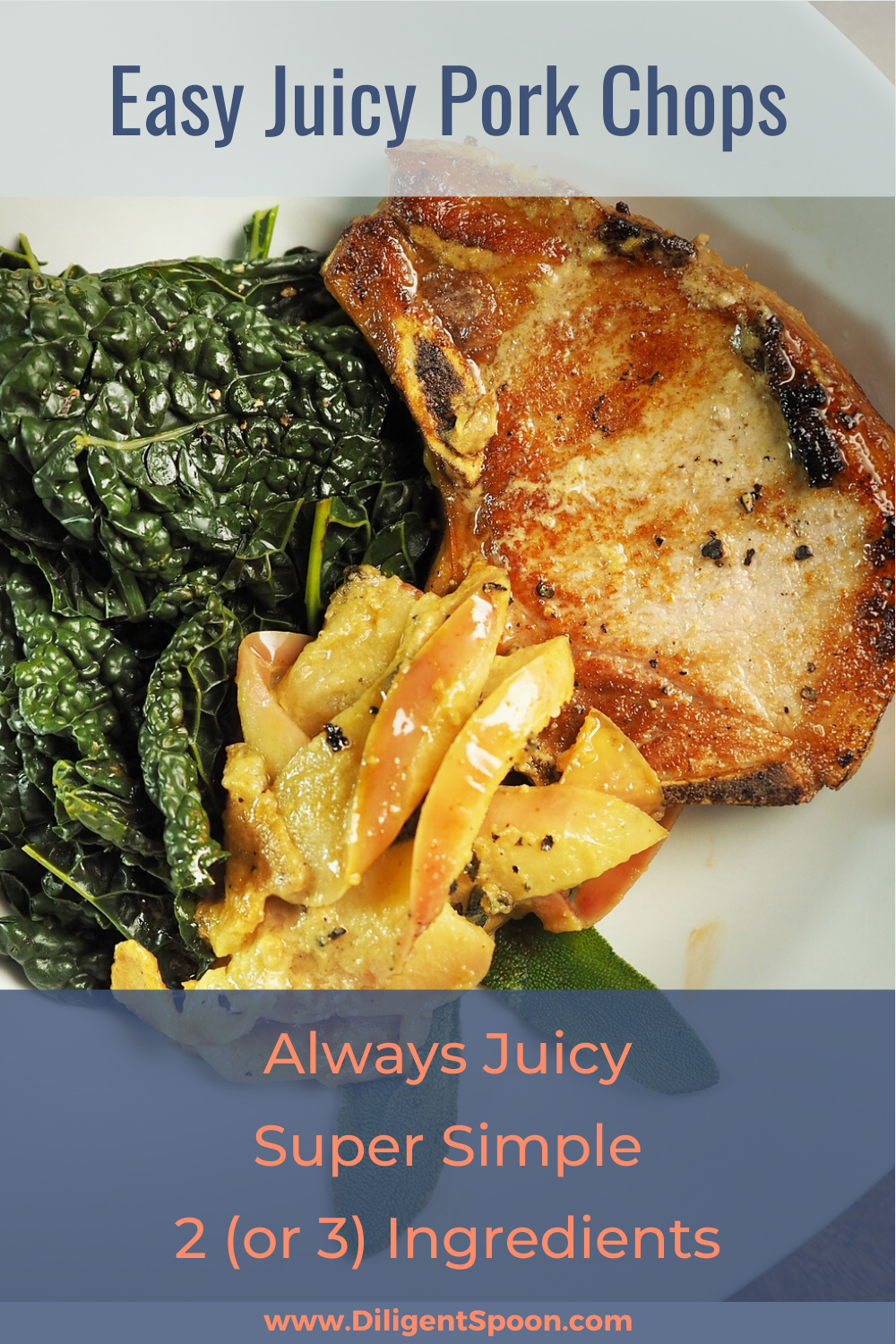Easiest, Juiciest Pork Chops Ever
I get excited about pork – it’s delicious, easy to cook, versatile, and more sustainable than beef (not to mention less expensive). According to research published by the National Academy of Sciences, pork uses 10% of the environmental resources to produce – on a per pound basis – than beef. That is shocking – and a relief – for me, because it gives me solid reasons for choosing pork over beef.
And, who can resist the smell of fried bacon or a low-and-slow-cooked pork shoulder? Even when I was a vegan, I loved that aroma wafting through my neighborhood from someone else’s kitchen. Except for the two years of being a vegan, pork has always been in heavy recipe rotation at the Hagen house.
Pork Chops: More Exciting Than Chicken, Less Risky Than Beef
Pork chops are a wonderful alternative to the same ol’ chicken breast or pricy T-bone steak. Don’t be intimidated by the numerous names given to chops – loin, rib, sirloin, top loin and blade chops – these monikers are simply based on meat’s location on the pork loin between the shoulder and the hip. For all you ever wanted to know about pork and the various cuts, check out the pork.org site.
Depending on the cut, pork chops are nearly as lean as chicken breast and always less than half the cost of T-bone steak.
Banish Dry Pork Chops with Brining
However, as we’ve experienced first-hand, some of these healthy lean cuts can dry out during cooking, leaving you with a delicious-looking pork chop that chews like a piece of leather. There is a foolproof solution to the scourge of dry pork chop. It’s called brining, or soaking the chops in (basically) salt water for a period of time.
The salt water/brine does two things:
- Seasons meat
- Denatures (changes the structure of) meat proteins so can absorb and retain water/moisture.
Here’s an easy recipe to up your pork game and guarantee juicy – not dry – pork chops every time.
But wait … there’s more! This brining process can be done on any lean cut of pork that tends to dry out during cooking. I’ve had great results with whole pork loin, loin roasts, etc.
I hope you give the brining process a try the next time you make pork chops. Since pork is a more environmentally-friendly animal protein and generally leaner than beef, I encourage you experiment with replacing some of your beef with pork. Plus, pork easy to cook, adaptable to just about any recipe, and now – always tender and juicy.
Please let me know if you try this method, and what you think!
Works Cited
- CBS News. “The Most Polluting Protein? Environmental Impact of Beef, Pork, Poultry.” CBS News, CBS Interactive, 21 July 2014, www.cbsnews.com/news/the-most-polluting-protein-environmental-impact-of-beef-pork-poultry/.
- Eshel, G., et al. “Land, Irrigation Water, Greenhouse Gas, and Reactive Nitrogen Burdens of Meat, Eggs, and Dairy Production in the United States.” Proceedings of the National Academy of Sciences, vol. 111, no. 33, 2014, pp. 11996–12001., doi:10.1073/pnas.1402183111.
- Gallary, Christine. “The Key to Grilling Juicy, Flavorful Pork Chops Every Time.” Kitchn, Apartment Therapy, LLC., 17 May 2019, www.thekitchn.com/grilled-pork-chops-268342.
- “Home.” We Care, www.porkcares.org/.
- “How to Salt Chicken & How to Brine Chicken.” How to Salt Chicken & How to Brine Chicken | Cook’s Illustrated, www.cooksillustrated.com/articles/610-how-to-salt-chicken-and-how-to-brine-chicken#briningworks.
- “People. Pigs. Planet.” Pork Checkoff, pork.org/.
Disclaimer: I am not a doctor. The information I provide is based on my personal experience, education and study of dietetics, human nutrition, and biochemistry; and my experience as a runner and athlete. Any recommendations I may make about exercise, nutrition, supplements or lifestyle; or information provided to you in person or on this website are for information purposes only and do not take the place of professional medical advice.


You May Also Like

What Are Omega-3s? 4 Things You Need to Know About These Essential Fatty Acids
October 25, 2021
Favorite Diligent Indulgence – The Mocha Smoothie
June 14, 2021

